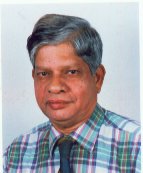| April 20, 2012 | 30
Wednesday, April 25, 2012
Second Wind: Air-Breathing Lithium Batteries Promise Recharge-Free Long-Range Driving--If the Bugs Can Be Worked Out: Scientific American
Second Wind: Air-Breathing Lithium Batteries Promise Recharge-Free Long-Range Driving--If the Bugs Can Be Worked Out: Scientific American IBM-led research to create lithium-air electric vehicle batteries gets a boost from Japanese chemical companies toward the goal of 800 kilometers out of a full charge
Sunday, April 8, 2012
Materials Inspired by Mother Nature: One-Pound Boat That Could Float 1,000 Pounds
Materials Inspired by Mother Nature: One-Pound Boat That Could Float 1,000 Pounds ScienceDaily (Mar. 25, 2012) — Combining the secrets that enable water striders to walk on water and give wood its lightness and great strength has yielded an amazing new material so buoyant that, in everyday terms, a boat made from 1 pound of the substance could carry five kitchen refrigerators, about 1,000 pounds.
Saturday, April 7, 2012
Fossil Free: Microbe Helps Convert Solar Power to Liquid Fuel: Scientific American
Fossil Free: Microbe Helps Convert Solar Power to Liquid Fuel: Scientific American A new "bioreactor" could store electricity as liquid fuel with the help of a genetically engineered microbe and copious carbon dioxide.
Sunday, March 11, 2012
Scientists revolutionize electron microscope: New method could create highest resolution images ever
Scientists revolutionize electron microscope: New method could create highest resolution images ever ScienceDaily (Mar. 6, 2012) — Researchers at the University of Sheffield have revolutionised the electron microscope by developing a new method which could create the highest resolution images ever seen.
Friday, March 2, 2012
Friday, October 21, 2011
A Global Plan For Sustainable Agriculture: Scientific American
A Global Plan For Sustainable Agriculture: Scientific American Use less land, eat less meat, waste less food. Sounds obvious, but these plans were developed after an intense examination of farm data and satellite images.
How do we feed 9 billion people by 2050 with roughly the same amount of land? An international team of researchers from Canada, the U.S., Sweden, and Germany has come up with a plan--using global models of agricultural systems and environmental impacts by combining crop data and satellite images from around the world--to double the world's food production while reducing agriculture's environmental impact.
How do we feed 9 billion people by 2050 with roughly the same amount of land? An international team of researchers from Canada, the U.S., Sweden, and Germany has come up with a plan--using global models of agricultural systems and environmental impacts by combining crop data and satellite images from around the world--to double the world's food production while reducing agriculture's environmental impact.
Friday, July 1, 2011
Bill Gates Urges Young Scientists to Consider the "Needs of the Poorest"
Observations: Bill Gates Urges Young Scientists to Consider the "Needs of the Poorest": "LINDAU, Germany—Microsoft founder Bill Gates thrilled a crowd of 566 young researchers from 77 countries gathered here June 26 for the opening ceremony of the 61st Meeting of Nobel Laureates, and he wasted no time in telling them what to do." "I admonish you to consider the needs of the poorest in the work that you do," he told the scientists. "The advances there will be particularly important in coming years and without your attention they will not take place." Gates made his comments following his induction into the honorary senate of the Foundation of the Lindau Nobel Laureate Meetings.
Subscribe to:
Posts (Atom)




